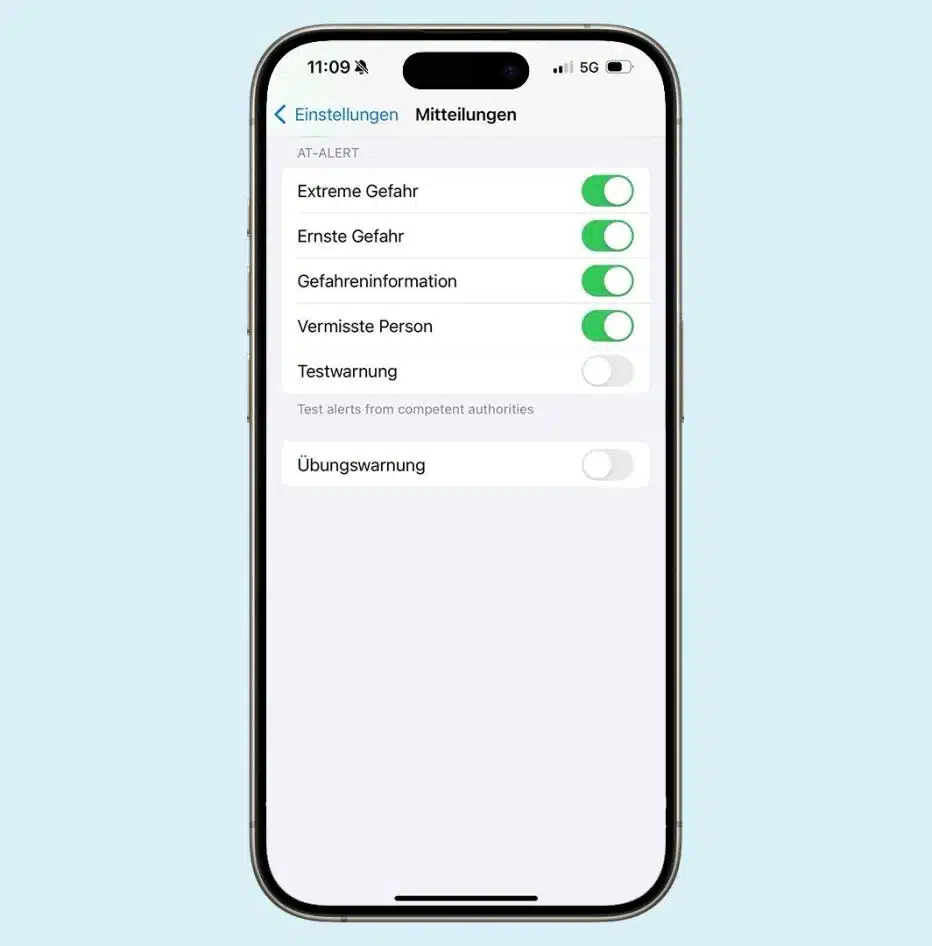New smartphone alarm in Austria: The introduction of a new, state-of-the-art disaster warning system in Austria represents a decisive advance in public safety and crisis communication. By using the so-called “cell broadcast” technology, which works independently of SMS and the Internet a big step towards a comprehensive and reliable warning to the population. The innovative “Public Warning System” is scheduled to go into operation from summer 2024 and send warnings of disasters and dangerous situations directly to citizens’ cell phones.
Involvement of key stakeholders
The system is the result of close cooperation between the Ministry of the Interior, the State Secretariat for Digital Affairs, the state warning centers and the mobile phone operators. This cooperation ensures that the technical infrastructure and the necessary updates from the smartphone manufacturers have already been implemented in Austria in advance. The preparations for the “Digital Siren” have now largely been completed. State Secretary Florian Tursky and Interior Minister Gerhard Karner informed the public about the upcoming activation of the system and emphasized the importance of the population installing the appropriate smartphone updates in order to be prepared for the summer.
Technology and benefits
The “Public Warning System” uses cell broadcast technology, which enables mass communication to cell phones in a specific area without relying on the traditional SMS system or the Internet. This has the advantage that warning messages can be delivered reliably even when the networks are overloaded or the Internet fails. The system will send warnings of natural disasters, technical malfunctions or other dangerous situations initiated by the nine state warning centers and the Ministry of the Interior.

Supplementing existing warning systems
In Austria there is already a mobile radio-based warning system called KATWARN, which originally comes from Germany and was adapted for Austrian needs. The “Public Warning System” is designed to complement this and other existing warning systems and is intended to be used in special individual cases. With this expansion of warning options, the safety of the population in Austria will be further increased through an additional, reliable source of information.
Questions and answers about the disaster alarm via smartphone:
Question 1: How does the “Public Warning System” work?
Answer 1: The system uses cell broadcast technology to send alerts directly to cell phones, independent of SMS and Internet.
Question 2: When will the system go into operation in Austria?
Answer 2: Commissioning is planned for summer 2024.
Question 3: What is the advantage of cell broadcast technology?
Answer 3: It enables the reliable transmission of warning messages even in the event of network overload or Internet failure.
Question 4: Do I have to do anything to receive the alerts?
Answer 4: Yes, it is recommended to install the latest updates from smartphone manufacturers.
Question 5: Does the new system complement existing warning systems?
Answer 5: Yes, it complements systems like KATWARN to further increase security.
Conclusion
The introduction of the “Public Warning System” in Austria represents a significant advance in the public security infrastructure. By integrating the most modern technologies into crisis management, not only is the effectiveness of warnings in the event of disasters and emergencies maximized, but also the resilience of communication networks is strengthened . The system highlights the importance of preparing and adapting to modern challenges to ensure the safety of the population.
For more information and insights into the world of digital education, subscribe to the Mimikama newsletter at https://www.mimikama.org/mimikama-newsletter/ and attend our online lectures and workshops at https://www.mimikama. education/online-lecture-by-mimikama/.
Source: futurezone.at
Also read:
Notes:
1) This content reflects the current state of affairs at the time of publication. The reproduction of individual images, screenshots, embeds or video sequences serves to discuss the topic. 2) Individual contributions were created through the use of machine assistance and were carefully checked by the Mimikama editorial team before publication. ( Reason )

